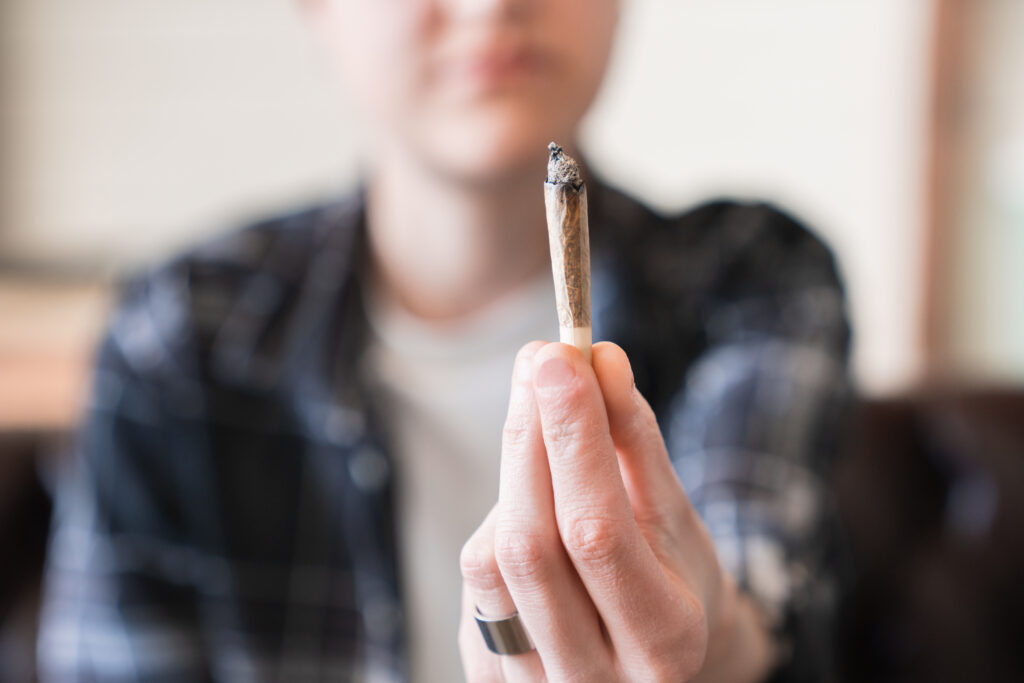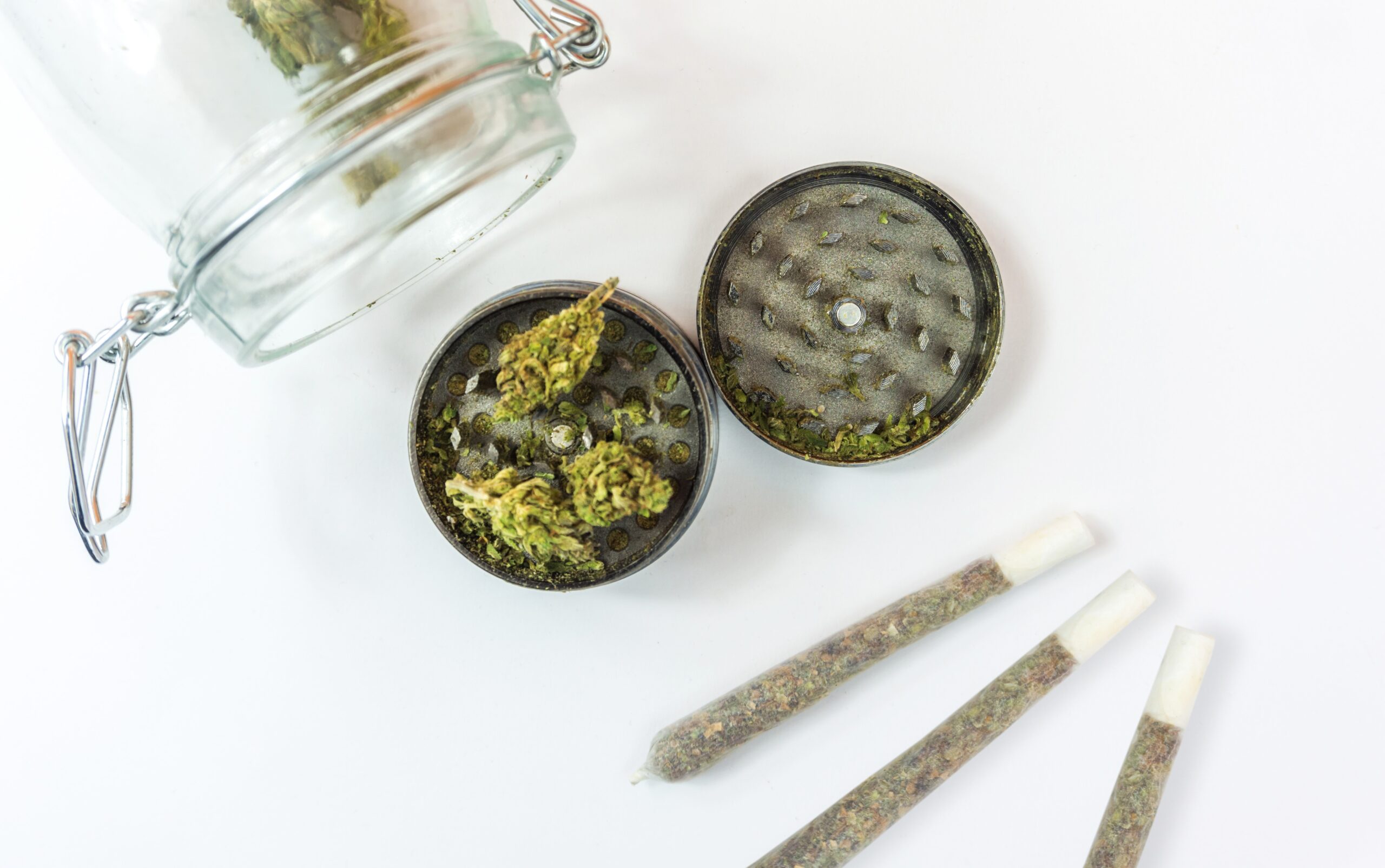We offer medical detox and multiple addiction treatment options in our
luxury treatment centres in Port Hope, Cobourg, and Ottawa.
Weed Withdrawal: What to Expect and How to Cope
People who use weed medicinally or recreationally for a prolonged period can develop withdrawal symptoms when they decide to cut down or stop using. Using cannabis a few times is often not enough to trigger withdrawal, but continued use will make it difficult for many users to quit. Not everyone who uses marijuana for extended periods experience withdrawal; this 2020 study involving over 23,000 participants revealed that 47% of users experienced cannabis withdrawal. Research also shows that about 30% of cannabis users develop a substance use disorder.
Weed withdrawal does not cause severe adverse or life-threatening effects as seen in other addictive substances like opioids, but the symptoms can cause discomforting side effects and cause relapse. While some people with cannabis withdrawal may get through the symptoms on their own, chronic users who have become dependent on cannabis may need professional help. The Canadian Centre for Addictions explains weed withdrawal symptoms and how you can successfully manage the symptoms and cope with cravings.
Key Takeaways
- Weed withdrawal refers to the unpleasant effects long-term users of marijuana experience when they try to stop or reduce their consumption.
- Not everyone who uses marijuana for extended periods experiences withdrawal symptoms when they try to stop.
- Weed withdrawal symptoms are not life-threatening but can be highly discomforting.
- Most cases of weed withdrawal do not require professional help, but people with co-occurring disorders or severe addiction will require medical intervention.
What is Weed Withdrawal?
Weed withdrawal refers to the adverse effects long-term users of marijuana experience when they abruptly cease or reduce their use. Tetrahydrocannabinol (THC) is the chemical responsible for the psychoactive properties of cannabis and related products. The more THC a marijuana strain contains, the stronger its potency and effects on the brain.
Prolonged cannabis use allows the brain to build THC tolerance and dependence. When this supply suddenly stops, the brain will need time to adjust to the new normal, leading to uncomfortable physical and psychological symptoms. The severity of the symptoms depends on the length and frequency of use and the strain of cannabis used. Cannabis withdrawal symptoms may also be worsened by co-existing mental health disorders or the use of other substances like benzodiazepines or alcohol.

Why Does it Happen?
Weed withdrawal occurs due to the action of THC on the brain. When cannabis is smoked, chewed, or used in any other way, THC molecules cross the blood-brain barrier and bind to cannabinoid receptors in the brain. It mimics the action of anandamide, a cannabinoid that affects pain perception and motivation.
THC stimulates the brain’s reward system to release higher levels of dopamine, leading to the associated high. This dopamine surge prompts the brain to repeat reward-seeking behaviour, leading to potential dependence and addiction. Withdrawal symptoms occur when a person who is dependent or addicted to marijuana tries to quit or reduce their use. Smoked cannabis acts within seconds, while edibles take minutes to hours before kicking in.
How Common is it?
In 2020, a meta-analysis of observational studies including over 23,000 participants found the prevalence of cannabis withdrawal symptoms to be 47%. These findings show that cannabis withdrawal is common among regular users, especially those in clinical settings and individuals with substance use disorders.
How Long Does Weed Withdrawal Last?
Weed withdrawal generally lasts two to three weeks, depending on the length and severity of usage. Heavy users will experience withdrawal symptoms within a day after quitting and continue to experience cravings even when the symptoms have dissipated. In most cases, symptoms should resolve within two weeks. The symptoms will be more intense for people who quit entirely than those who reduce their usage.
Weed Withdrawal Symptoms
Marijuana withdrawal symptoms indicate that the body is adjusting to functioning without THC. These symptoms are not life-threatening but can be quite unpleasant. Weed withdrawal symptoms differ from person to person, but common ones include:
Anxiety and Restlessness
People who use cannabis as a coping mechanism for anxiety may experience increased nervousness and restlessness when they stop using. Finding newer coping mechanisms might help manage these symptoms.
Anger and Irritability
Individuals who use marijuana to deal with stress may feel angry and irritable when they stop using. Finding healthier ways of coping with stress, like exercising, meditating, or listening to music, can help make the symptoms manageable.
Sleep Disturbances
Sleep disturbances are common among users who give up cannabis. It is especially prevalent among people who use it medically as a sleep aid. Developing a new sleep routine and creating a healthier sleep environment may help.
Strange or Unsettling Dreams
Strange or unsettling dreams typically accompany marijuana withdrawal; however, they will begin to fade as other symptoms subside.
Cravings
THC withdrawal comes with intense cravings to use the substance of choice. These urges subside with time but may arise intermittently even after full recovery. Avoiding triggers or environments that may remind you of past use can help with cravings.
Appetite and Weight Changes
Marijuana use tends to improve appetite, and stopping its use may lead to diminished appetite, nausea, stomach upsets, and weight loss. Try eating small portions or having smoothies if you can’t keep anything down. Performing exercises or getting fresh air may also help restore your appetite.
Flu-like Symptoms
Marijuana withdrawal may also cause flu-like symptoms like chills, sweats, headaches, and muscle aches. Taking over-the-counter flu medications may help.
Depression
Individuals who use marijuana to cope with depressive feelings may see them return when they quit. You may need to see a doctor if you’re expressing depression due to your marijuana withdrawal.
Tremors
Marijuana withdrawal may also cause tremors (“the shakes”), especially in heavy users.
The presence of three or more of these symptoms within a week of cannabis use cessation or reduction indicates cannabis withdrawal syndrome.
Causes of Weed Withdrawal
The reasons for marijuana withdrawal vary among individuals, but some reasons why people may experience weed withdrawal include:
Co-occurring Mental Health Conditions
Individuals with co-occurring mental disorders like post-traumatic stress disorder (PTSD), depression, anxiety, and personality disorders have a higher chance of experiencing marijuana withdrawal.
Polysubstance Use
Concurrent use of marijuana with substances like tobacco, alcohol, or benzodiazepines may make it more likely for withdrawal symptoms to develop. However, other substances like opioids may prevent marijuana withdrawal symptoms.
Age
Older adults who use marijuana tend to experience withdrawal more frequently than teenagers. The reason for this is likely because adults use marijuana more often and in larger quantities than younger users.
Marijuana Strain
The potency of the marijuana strain plays a role in withdrawal. Using strains with THC content of 20% and higher increases the risk and intensity of withdrawals. The typical THC content of marijuana is between 2% and 6%.
Weed Withdrawal Timeline
The weed withdrawal timeline varies among individuals depending on personal factors and addiction severity.
Weed withdrawal generally follows this timeline after the last use:
- Day 1
The first symptoms of weed withdrawal typically include anxiety, mood swings, irritability, and insomnia.
- Day 2 to 6
Symptoms peak in severity within this period, including chills, sweating, tremors, and abdominal pain. The risk of relapse is also highest at this point.
- Day 6 to 14
Most acute symptoms begin to resolve, and other symptoms improve. There may still be cravings and depressive episodes as the brain adjusts to functioning without THC.
- Day 15 and Above
All symptoms should resolve by the third week. In a few cases, people may experience depression, anxiety, and cravings for up to several weeks to months after last use.
Treating Weed Withdrawal
Weed withdrawal symptoms subside and cease with time, and most people will not require professional help. However, people with severe cases or co-occurring disorders may need professional detoxification and a comprehensive treatment plan. Available cannabis withdrawal treatment options include:
Medical Detox
Marijuana medical detox allows people to ease off withdrawal and manage their symptoms under medical supervision till the drug is entirely out of their system. It is particularly useful for chronic users with a high risk of relapse and those with a co-occurring mental health condition. People who have tried to quit and failed in the past or those with an addiction to another substance may also benefit from a medical detox. A person whose home environment does not discourage substance abuse may also be better off recovering in a detox facility.
Inpatient Rehab
Inpatient rehab for weed withdrawal involves treatment at a medical facility designed to help people stop using drugs permanently. They manage underlying issues and address thinking patterns that may cause relapse. Inpatient rehab facilities deliver comprehensive treatment plans, usually involving individual or group behavioural therapy sessions and other forms of intervention.
Outpatient Treatment
Outpatient treatment for weed withdrawal involves multiple weekly appointments with a therapist or counsellor. Here, the individual lives at home and returns for scheduled sessions. Outpatient treatment is an ideal option for clients who still have to go to work, care for kids, or engage in other daily activities.
Support Groups
Support groups connect people trying to quit weed with others facing the same problems so they can share ideas and practice being accountable. Groups like Marijuana Anonymous and SMART Recovery help recovering weed addicts find like minds and stay on the path to complete sobriety.
Can I Prevent Weed Withdrawal
If you’re planning to quit marijuana, you may be able to prevent or minimize withdrawal by tapering off instead of stopping abruptly. There are currently no approved medications for treating cannabis withdrawal, but drugs like Dronabinol mimic THC and can help minimize cravings. Over-the-counter medications may help manage flu-like symptoms and sleep disturbances. You can also make the first few days of withdrawal manageable by exercising regularly, eating healthy, and staying hydrated.
Our Tips for Managing Weed Withdrawal Effectively
Weed withdrawal is an uncomfortable experience, and knowing that it’s only temporary and you’ll get better makes the process easier. Our tips for making the withdrawal process less unpleasant also come in handy as you plan for how to quit smoking weed.
Exercise Regularly
Exercise triggers the release of endorphins – feel-good chemicals in the brain that improve your mood and distracts you from your cravings. Doing 25 to 30 minutes of moderate to vigorous exercise daily will help you feel better, remove toxins via sweat, and get higher-quality sleep.
Eat Healthy Food
Eating healthy meals in small, frequent portions can also boost your mood and make you feel better overall. Avoid snacks or processed meals, as they make you feel sluggish and irritable. Stick to vegetables, fruits, whole grains, lean protein, and healthy fats. Keep yourself hydrated by drinking lots of water. It’s best to avoid sugary or caffeinated drinks during your withdrawal period, as they can exacerbate anxiety and tremors.
Use Specific Remedies
You may need specific remedies to handle some symptoms of withdrawal. Medications may help with nausea, appetite changes, and sleep disturbances. You may also try meditation to help you relax and sleep better.
Practice Urge Surfing
Urge surfing is a practice that involves riding out your cravings like waves. The wave rises as the urge comes till it reaches peak intensity. The idea is that your urges will pass if you can wait them out. The cravings may feel intense at their peak but will not last forever.
Use Delay and Distraction Techniques
Find something that delays and distracts your mind from weed when you feel cravings. It could be reading, watching a movie, or talking to someone. You can also set a timer for maybe an hour while you occupy your mind with another activity. The cravings will likely feel less intense when the time is up.
Keep a Journal
Journaling helps you track your progress and better understand your relationship with marijuana. Keeping a written record of your thoughts, feelings, and events as you go through marijuana withdrawal can make the process easier. It also helps you to learn about your triggers as you plan how
Find Support
Getting support from your loved ones and friends can make your withdrawal symptoms more manageable and help you stay accountable.
Conclusion
Weed withdrawal can be an unpleasant experience, but knowing what to expect and how to manage it can make the situation less daunting. Relapse is also possible after withdrawal, so you need guidance and accountability to remain sober. At CCFA, our team of addiction experts combines over 100 years of experience in dealing with weed addiction, withdrawal, and related issues. We are a rehab that provides the help and support you or your loved one needs to go through withdrawal and maintain lasting sobriety. Visit our Understanding Addiction Resources for information on marijuana addiction and what we do.
Frequently asked questions
Yes. You can quit weed and nicotine at the same time, but it’s more challenging to achieve than stopping either drug alone. Consider seeking medical advice if you’re struggling to quit both substances simultaneously.
Excessive sweating after quitting weed occurs because the body is trying to eliminate toxins. You should drink plenty of fluids during this period and avoid caffeinated beverages, which can worsen your symptoms.
Consider engaging in fun activities like reading, watching a movie, or talking to someone when bored instead of smoking weed. You can also substitute smoking weed with learning something new, like rock climbing, speaking a new language or playing an instrument. You may also want to avoid people or places that trigger you to smoke.
How long the effects of weed last depends on whether it’s smoked or consumed in food or drink. Smoked weed produces noticeable short-term effects for one to three hours, while weed consumed in food or beverage may last several hours, depending on the quantity ingested.
Research suggests that there may be a relationship between cannabis use and hot flashes in menopausal women. In this study, however, menopausal women also report using cannabis to alleviate hot flashes and other symptoms of menopause.
No. CBD is an active ingredient in cannabis but produces no addictive effects as it does not contain THC – the psychoactive component of cannabis.






